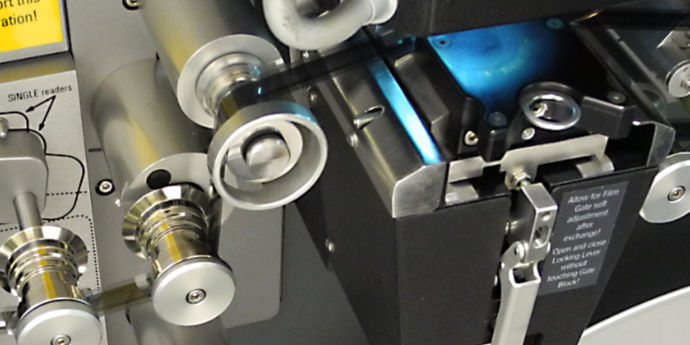Always curious about film restoration software, the name Digital Vision appeared on my radar circa 2013. However I didn’t start looking at in detail until 2016.
Digital Vision are an English company. They make a suite of film restoration software under the name “Phoenix”. I sent an enquiry via their website and was in turn contacted by their Australian technical support person at the time, Felipe Muraca in Melbourne. Felipe advised me:
“You can run Phoenix on your MacBook Pro under Windows if you are only processing Dust/Dirt on SD video. I recommend an external fast hard drive as well. Phoenix DVO’s use CPU for the restoration tools and not GPU. I can organize an evaluation license for you to try.”
This looked like a possibility. They had an entry-level restoration tool called Phoenix Touch priced at US$2800. Much less expensive than PFClean or Diamant.
Their online tutorial videos showed Phoenix to be a capable piece of software, although it has a rather “clunky” non-native interface.
Taking up the offer of an evaluation licence, I began a practical investigation of the Phoenix software.
The first step was to purchase a licence for Windows 10 and to install that OS under Parallels Desktop on a Macbook Pro. The Phoenix Touch software was then installed inside the Parallels VM. After working through a few configuration issues, I was able to get the software running.
The software is complex and the interface and concepts different from other systems I had seen and my “demo licence” expired after only two weeks so, taking the oft-quoted advice, I decided to “Read the Manual” before requesting another licence. The manual is online and quite lengthy and there are many concepts which need to be grasped along the way.
My impressions of the system at the end of this rather tedious journey were:
-
Despite initial appearances, Phoenix is very sophisticated and mature software.
-
Many of the processing tasks within Phoenix are handled by what they call “DVO filters” which are like plug-ins for the underlying framework.
-
The cheaper versus more expensive products in the Phoenix range differ only in what plugins they provide.
In the end, I decided that the cost of this software was more than I could justify for this project. There would also be a significant learning curve and a lot of tedious work doing manual restoration tasks. It was not a realistic proposition. So put Phoenix aside. Nevertheless, I had learned about yet another film restoration tool which would come back into the story again a little later.
